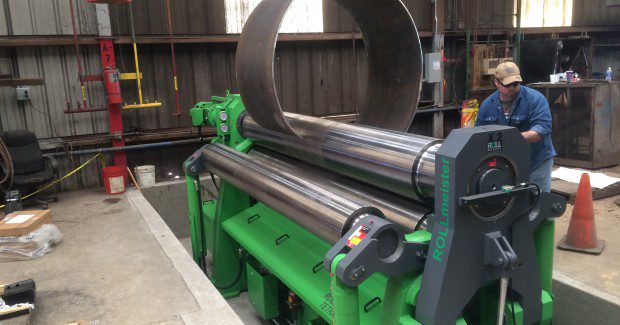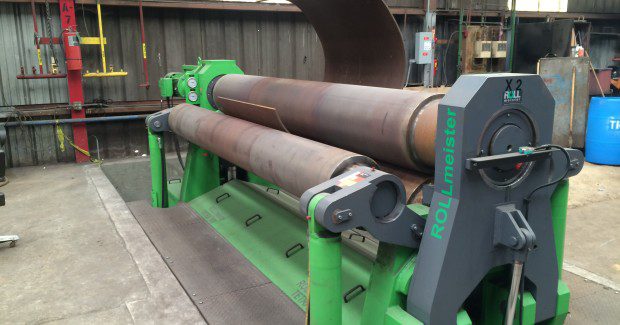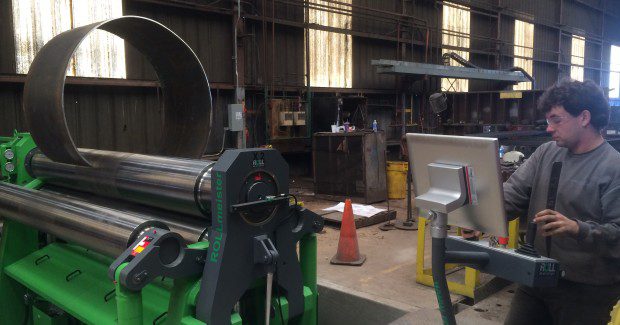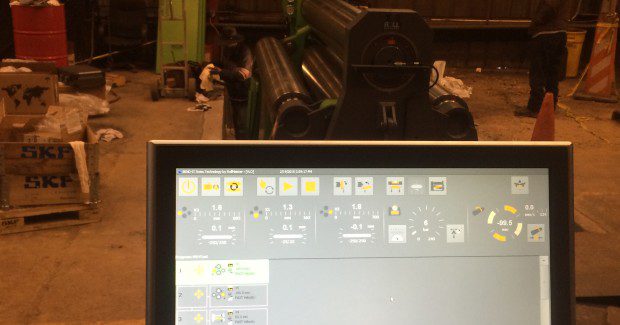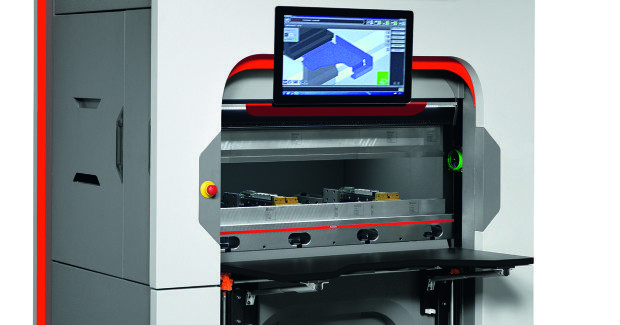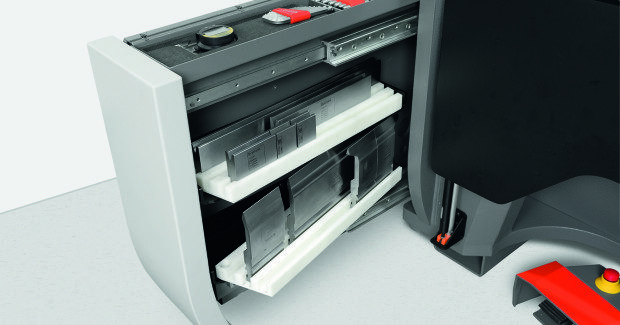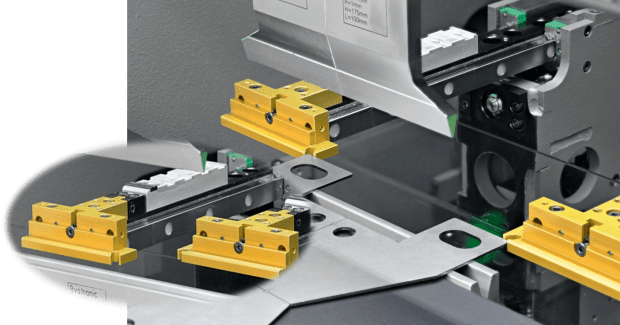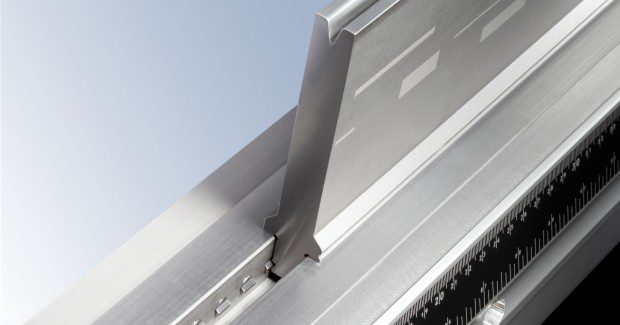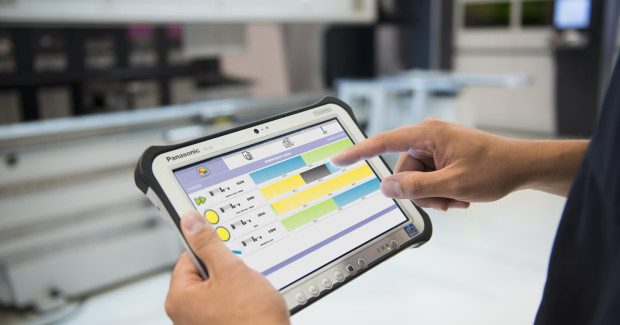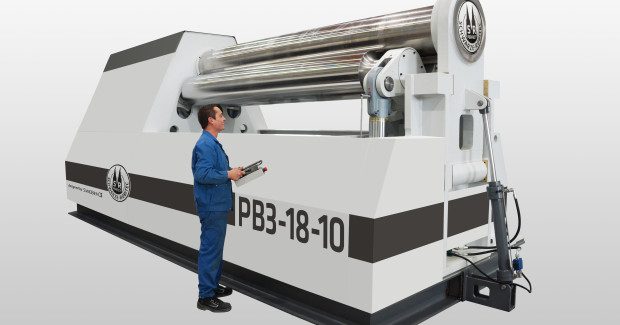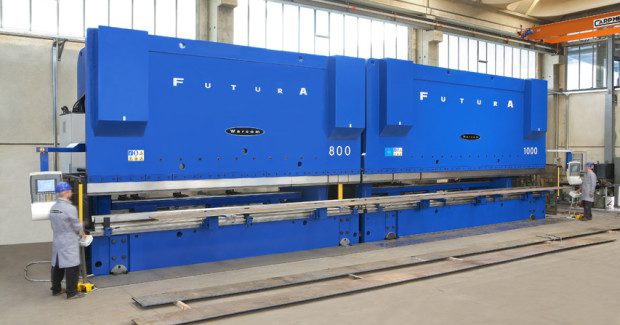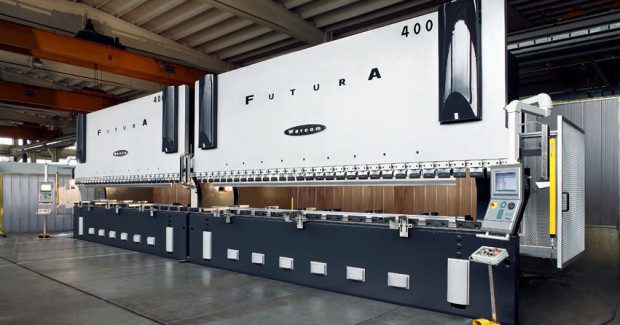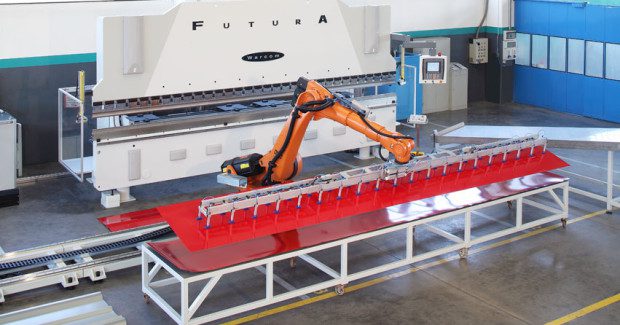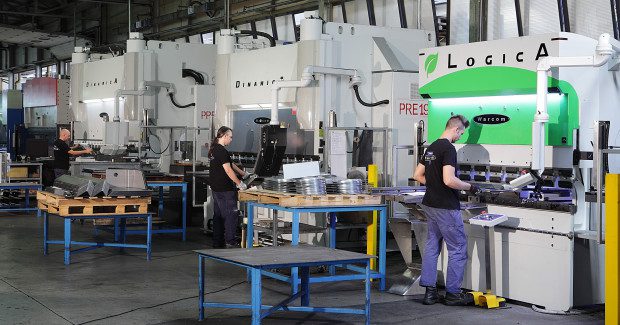All Bent Into Shape
Here is some of the newest equipment and tooling used to bend sheet metal and plate steel.
Posted: June 3, 2015
ROLL THICK SHELL OR PIPE DIAMETERS
With advanced control and CNC features, the Haeusler ROLLmeister Plate Roll TETRA series from Sterling Fabrication Technology (Dallas, TX) is ideal for medium and large batch production of shell and tube heat exchangers and pressure vessels with a small-to-midsize range of wall thicknesses, as well as economical single shell production. The TETRA line includes technical features that are usually only available on higher-end machines targeted specifically for shells and pipes with thicker walls. Its 4-roll design meets the requirements for high productivity better than other plate roll designs. The standard machine comes with a variable rotation speed of up to 26 fpm. The narrow machine geometry (the travel path of the side rolls related to the top roll) enables the application of high bending forces to a wide range of shell or pipe diameters to be rolled.
https://youtu.be/uGA2VJWNiRM
The TETRA plate roll uses standard encoders for absolute measurement to meet the highest degree of accuracy during the bending process. High quality state-of-the-art components from global suppliers with worldwide availability ensure minimum machine downtime, along with the presence of Haeusler online machine support and onsite service. A wide variety of options can optimize the machine to fit specific application requirements, including:
- Hardened surface rolls are ideal for rolling a mix of materials, such as carbon steel, stainless steel, aluminum, etc.
- Quick change top rolls of different diameters use roll crowning for proper web alignment to counter the effects of deflection and rapidly adapt the machine for rolling a wide range of wall thicknesses and pipe diameters.
- Accumulator functions allow the re-rolling of welded shells without the need to smooth the weld seam prior to rerolling.
The accumulator, encoders, roll drive with speed compensation are all features of plate rolls usually reserved for higher work thicknesses that enable a shop to achieve high precision roll quality and high volume. The electric rolls drive on the ROLLmeister operates at a low energy cost. The main machine power required is used to rotate the rolls. The TETRA line uses frequency controlled gear-motors for roll rotation that consume much less energy than conventional hydro-motors. Decreasing the energy consumption while increasing productivity reduces the overall return on investment period for the TETRA plate roll.
With no foundation requirements, the ROLLmeister is ready for production after leveling and roll-off testing are complete, making the installation process fairly quick and easy. The TETRA series includes an operator control desk with a 19 in touch screen for easy visualization of all process parameters and comfortable programming. The ergonomics of the joy sticks and the CNC control reduce the operator learning curve as well as potential fatigue that can occur during long, intensive hours of production.
MetalForms, Ltd. (Beaumont, TX), which specializes in manufacturing shell and tube heat exchangers and pressure vessels, recently installed a ROLLmeister TETRA 360 4-roll plate bending machine. “In order to stay competitive, we needed to reinvest in new equipment,” explained Dave Hearn, the president of Metalforms. “We previously used a 3-roll pinch machine and, to pre-bend both sides, we had to rotate the plate 180 deg after the initial pre-bend. We also had to use a wedge to meet tighter IDs due to lack of power/design of the previous roll, which was a safety concern. The age of the machine was a consideration as well because uptime is crucial for our business and we could not rely on the older roll. The technology behind the ROLLmeister was a big plus in our decision, from the online tele-diagnostics to the easily accessible component replacement.
Market demand was also a significant factor for MetalForms, which is seeing an increasing demand for thicker shells and tighter diameters. The ROLLmeister TETRA 360 helps the company respond to this demand quickly and easily, whereas prior operations including rerolling, which were a long and time-consuming process. The 4-roll design requires 1/8 of the time to reroll as compared to the traditional 3-roll pinch. “The ROLLmeister TETRA 360 increased our production with high roll speeds and easy plate alignment compared to our previous 3-roll machine,” notes Hearn. “It easily meets the demand of tighter IDs and thicker walls and has significantly reduced our rerolling time.”
The user friendly control allowed the operators at MetalForms to get up to speed very quickly during the launch of the machine. The CNC has been a great tool for data logging, which was previously done manually. This makes it quicker and easier for the shop to track the progress of their operators and helps the company to evaluate the cost per shell so they can remain more competitive. The anticipated return on investment for this machine is estimated between eight months to one year.
Sterling Fabrication Technology, 2707 West Mockingbird Lane, Dallas, TX 75235, 855-898-7867, [email protected], sterlingfabtech.com.
“MOVEABLE ON DEMAND” METAL BENDING
Bystronic Inc. (Elgin, IL) introduces their new Xpert 40, a compact portable high-speed press brake that is “moveable on demand” to where you need it, when you need it. The Xpert 40 is ideal when space is limited and capacities vary. With its integrated tool storage, this is the first press brake to combine the entire setup and production from one single station, greatly reducing non-productive bending times. Fiber lasers have increased demand on downstream material processing because they are capable of producing parts about twice as fast as the classic CO2 laser cutting machine. Its super high speed back gauge and ram ensure the highest production efficiency, enabling the Xpert 40 to easily keep pace with today’s increasingly popular high speed Fiber laser cutting machines.
https://youtu.be/rZYKh1uJXPg





